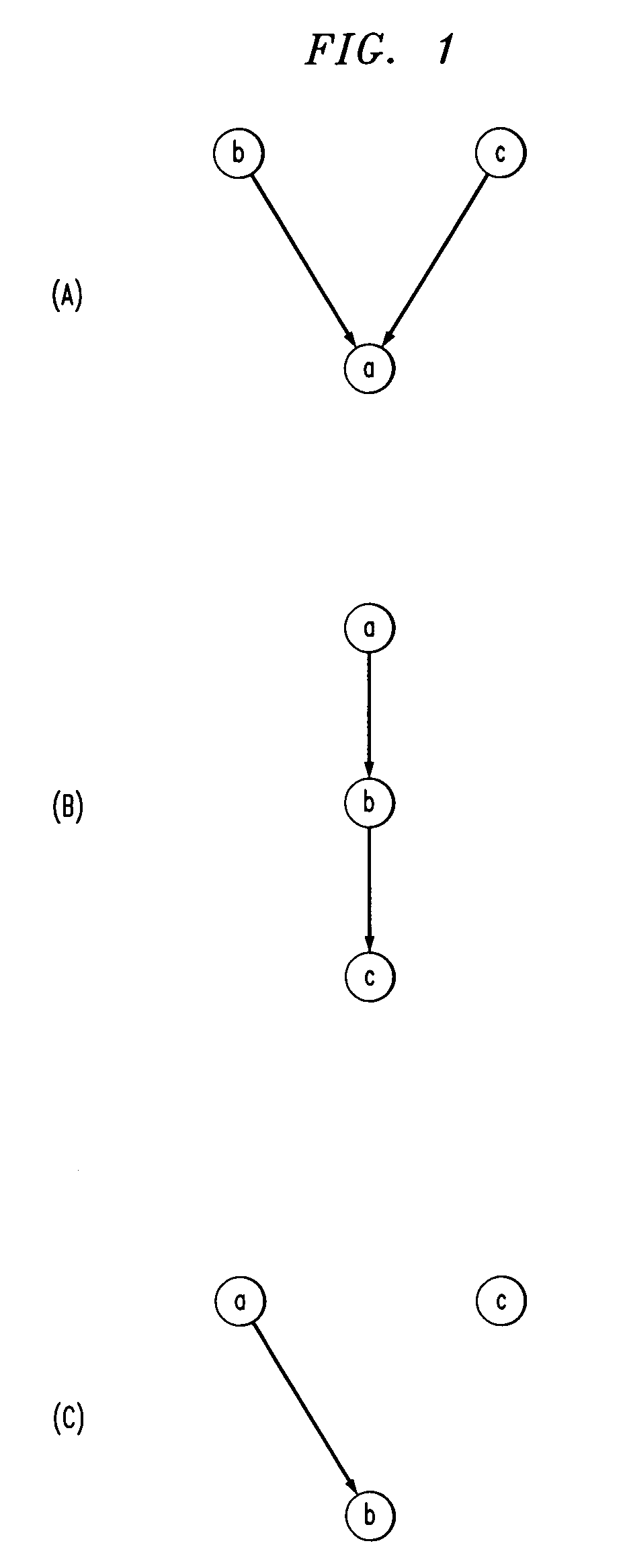Systems and methods for discovering fully dependent patterns
a technology of fully dependent patterns and systems, applied in the field of data processing techniques, can solve the problems of large number of unimportant patterns, low support thresholds, and inability to construct efficient discovery algorithms
- Summary
- Abstract
- Description
- Claims
- Application Information
AI Technical Summary
Benefits of technology
Problems solved by technology
Method used
Image
Examples
Embodiment Construction
[0031]The present invention provides techniques for mining fully dependent patterns that can not be found effectively and efficiently using conventional pattern discovery frameworks. In particular, the present invention provides for a new pattern that addresses the three aforementioned issues (in background section above) associated with conventional pattern discovery frameworks. We note that the above three issues are directly related to the first step of association rule discovery, i.e., finding all frequent patterns with a fixed threshold. To address these issues, the present invention employs a hypothesis test. Hypothesis testing has been used to test whether a set of variables significantly exceeds an assumed baseline distribution. When there is no specific prior knowledge about the association in a data set, the reasonable baseline distribution is the independent distribution. Any departure from the independent distribution will be of interest. Such a hypothesis test is known ...
PUM
 Login to View More
Login to View More Abstract
Description
Claims
Application Information
 Login to View More
Login to View More - R&D
- Intellectual Property
- Life Sciences
- Materials
- Tech Scout
- Unparalleled Data Quality
- Higher Quality Content
- 60% Fewer Hallucinations
Browse by: Latest US Patents, China's latest patents, Technical Efficacy Thesaurus, Application Domain, Technology Topic, Popular Technical Reports.
© 2025 PatSnap. All rights reserved.Legal|Privacy policy|Modern Slavery Act Transparency Statement|Sitemap|About US| Contact US: help@patsnap.com



